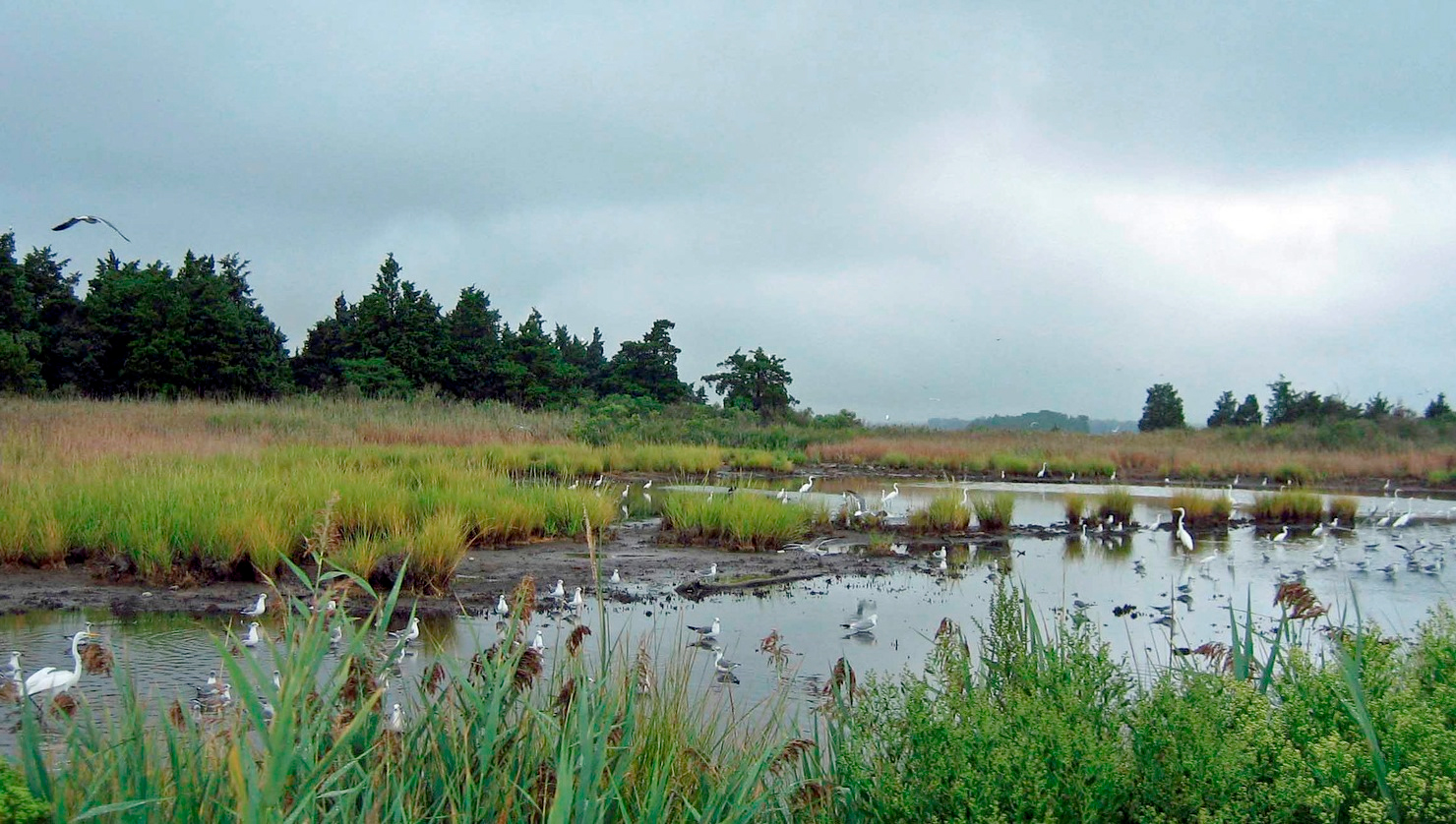Restoration Explorer
What is the Restoration Explorer app?

![]() The Restoration Explorer recommends potential living shoreline techniques to reduce nuisance flooding and erosion, increase recreational opportunities, improve water quality, and ultimately stabilize New Jersey’s shoreline.
The Restoration Explorer recommends potential living shoreline techniques to reduce nuisance flooding and erosion, increase recreational opportunities, improve water quality, and ultimately stabilize New Jersey’s shoreline.
Main functions:
- Determines areas that will be suitable for various types of oyster reef restoration based upon:
- Ecological Parameters like Salinity, Proximity to Salt Marsh, or relationship to Strategic Habitat Areas
- Socioeconomic Parameters such as Shoreline Erosion, Water Quality, and and Public Accessibility
- Allows the user to adjust individual parameters to customize the suitability map based on their restoration priorities.
- Provides exportable maps for site visits and to support the CAMA application process.
Who should use it?
This app is intended to help planners and coastal managers identify where habitat restoration could be most effective and help guide investments, permitting, and implementation at a regional and state scale.

545 volunteers working to help the Restore Coastal Alabama Project restore oyster reefs in Helen Wood Park, Mobile Bay, AL. Photo credit: 2011 Erika Nortemann/TNC.
How does it work?
Each suitability parameter is represented by an indexed raster with values ranging from 0 (not suitable) to 100 (optimal), which are created individually then combined into a single raster image service.
The app then allows a user to assign weights to the various criteria by sliding a bar to select how important they consider individual parameters in the overall suitability score; ranging from Low (0 value) to High (10 value).
When the user slides a bar, the predefined values for that parameter (0-100) are then multiplied by the weight (0-10) the user has assigned to it, combined, and summed to produce an overall score of restoration suitability that is dynamically displayed on the map. Sliding the bar to 0 eliminates the parameter from being included in the suitability analysis.







What are the strengths and limitations?
App Strengths:
- The app allows users to identify customized solutions tailored to their individual restoration goals and priorities.
- Provides a fast, easy, and intuitive way of visualizing restoration opportunities and getting the conversation started with stakeholders.
- Allows for an in-depth analysis of suitability of restoration sites which helps planners make the case for project permitting and implementation and can improve the restoration outcome.
App Limitations:
- The Restoration Explorer app is intended to help with scenario planning at a state or regional scale and is heavily dependent on the quality and resolution of data. Site visits are always necessary to confirm the feasibility of restoration projects.
Where is it being used?
Just after the Deepwater Horizon oil spill in 2010, TNC developed the first Restoration Explorer to help , guide post-disaster recovery and restoration efforts throughout the Gulf of Mexico. As a result, TNC and partners created the 100-1000 : Restore Coastal Alabama Partnership with the goal to build 100 miles of oyster reef breakwaters and promote 1,000 acres of marsh and seagrass in Alabama. The Restoration Explorer is being used to support grant and permitting applications for oyster reef restoration by helping to determine where restoration might be most effective based on local ecological and socio-economic criteria.

Artificial oyster reef built to restore the oyster population and protective oyster reefs in Mobile Bay, Alabama. Photo Credit: Ami Vitale
Launch the Restoration Explorer in the Gulf of Mexico’s mapping portal.
The Restoration Explorer app has been replicated and customized for several other geographies like coastal North Carolina, where it’s being used to prioritize subtidal and deep water oyster reef restoration for shoreline erosion and water quality, and New Jersey to identify living shoreline strategies.

Coastal destruction caused by Hurricane Sandy storm surge along the New Jersey Shore. Photo credit: Bridget Besaw
Who helped develop it?
The Nature Conservancy has long been active in all of the states on the Gulf Coast protecting and restoring critical habitats. Through the Conservancy’s decade-long partnership with the NOAA Restoration Center, and more recently with support from the American Recovery and Reinvestment Act, we have jointly invested millions of dollars in the restoration of Gulf oyster reefs, seagrass beds, coastal wetlands, coral reefs, and barrier islands.
The 100-1,000 Restore Coastal Alabama partnership including Alabama Coastal Foundation, Mobile Baykeeper, The Nature Conservancy and The Ocean Foundation, aims to address impacts from the oil spill and reverse years of environmental degradation along the Alabama coast through the restoration of coastal habitats.

